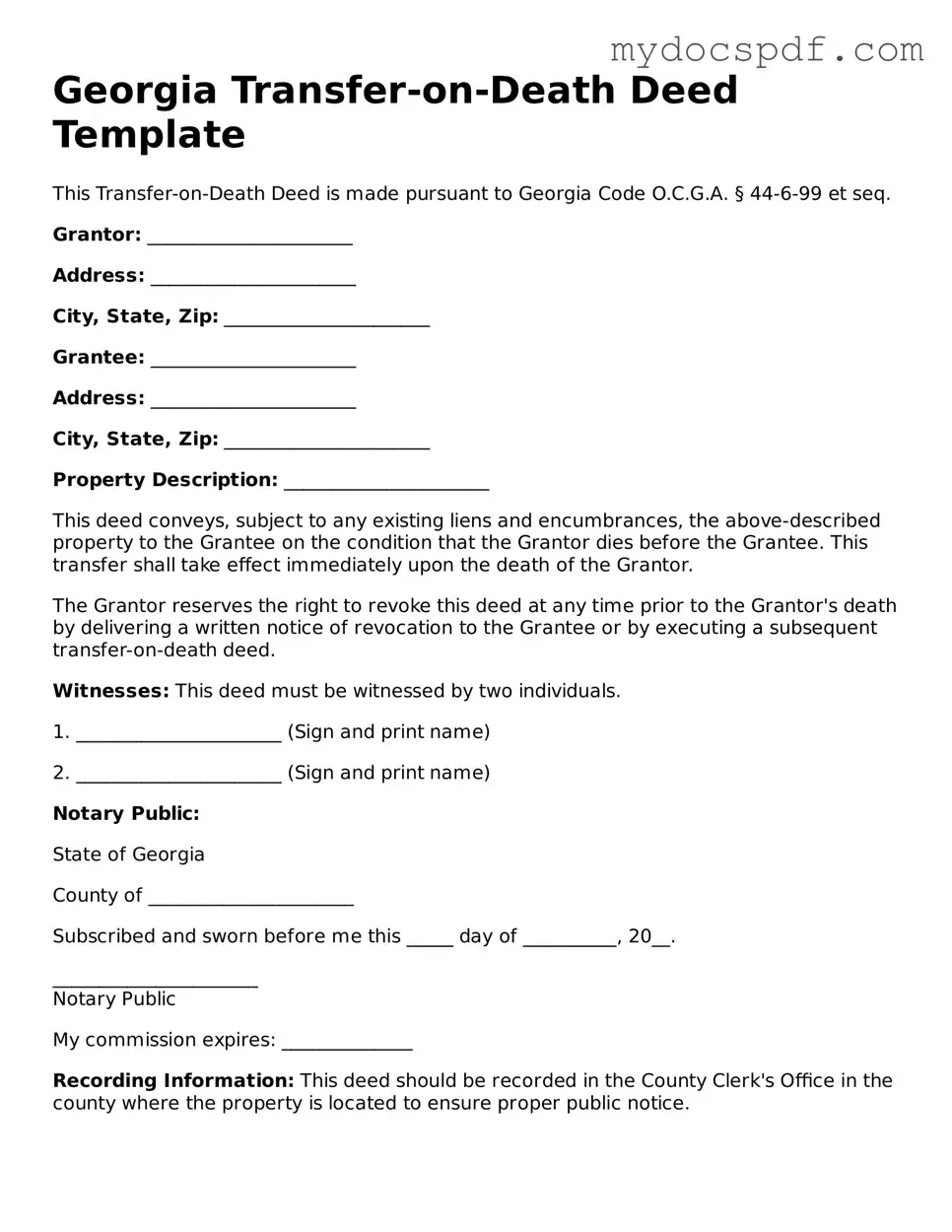Georgia Transfer-on-Death Deed Template
This Transfer-on-Death Deed is made pursuant to Georgia Code O.C.G.A. § 44-6-99 et seq.
Grantor: ______________________
Address: ______________________
City, State, Zip: ______________________
Grantee: ______________________
Address: ______________________
City, State, Zip: ______________________
Property Description: ______________________
This deed conveys, subject to any existing liens and encumbrances, the above-described property to the Grantee on the condition that the Grantor dies before the Grantee. This transfer shall take effect immediately upon the death of the Grantor.
The Grantor reserves the right to revoke this deed at any time prior to the Grantor's death by delivering a written notice of revocation to the Grantee or by executing a subsequent transfer-on-death deed.
Witnesses: This deed must be witnessed by two individuals.
1. ______________________ (Sign and print name)
2. ______________________ (Sign and print name)
Notary Public:
State of Georgia
County of ______________________
Subscribed and sworn before me this _____ day of __________, 20__.
______________________
Notary Public
My commission expires: ______________
Recording Information: This deed should be recorded in the County Clerk's Office in the county where the property is located to ensure proper public notice.
